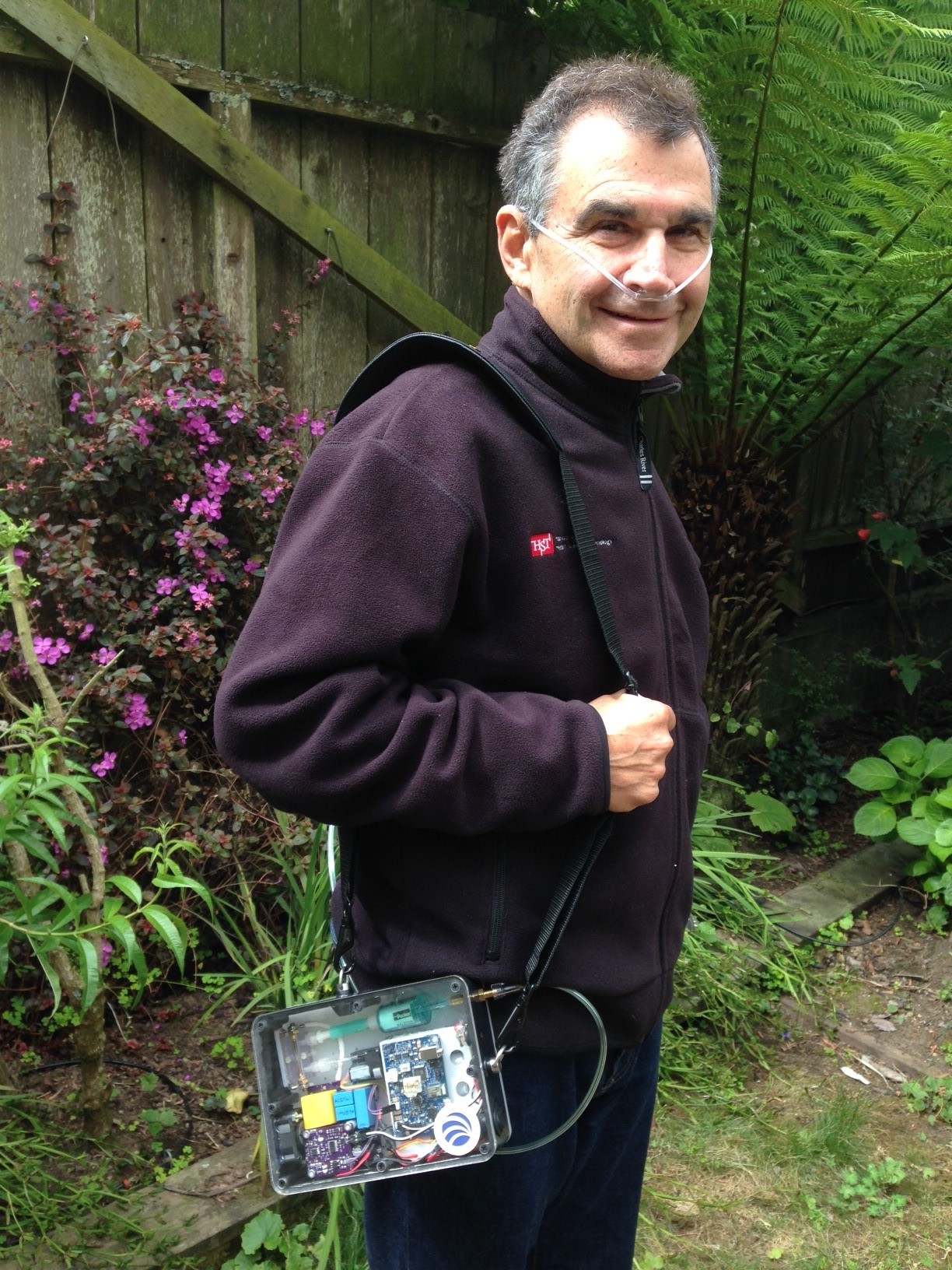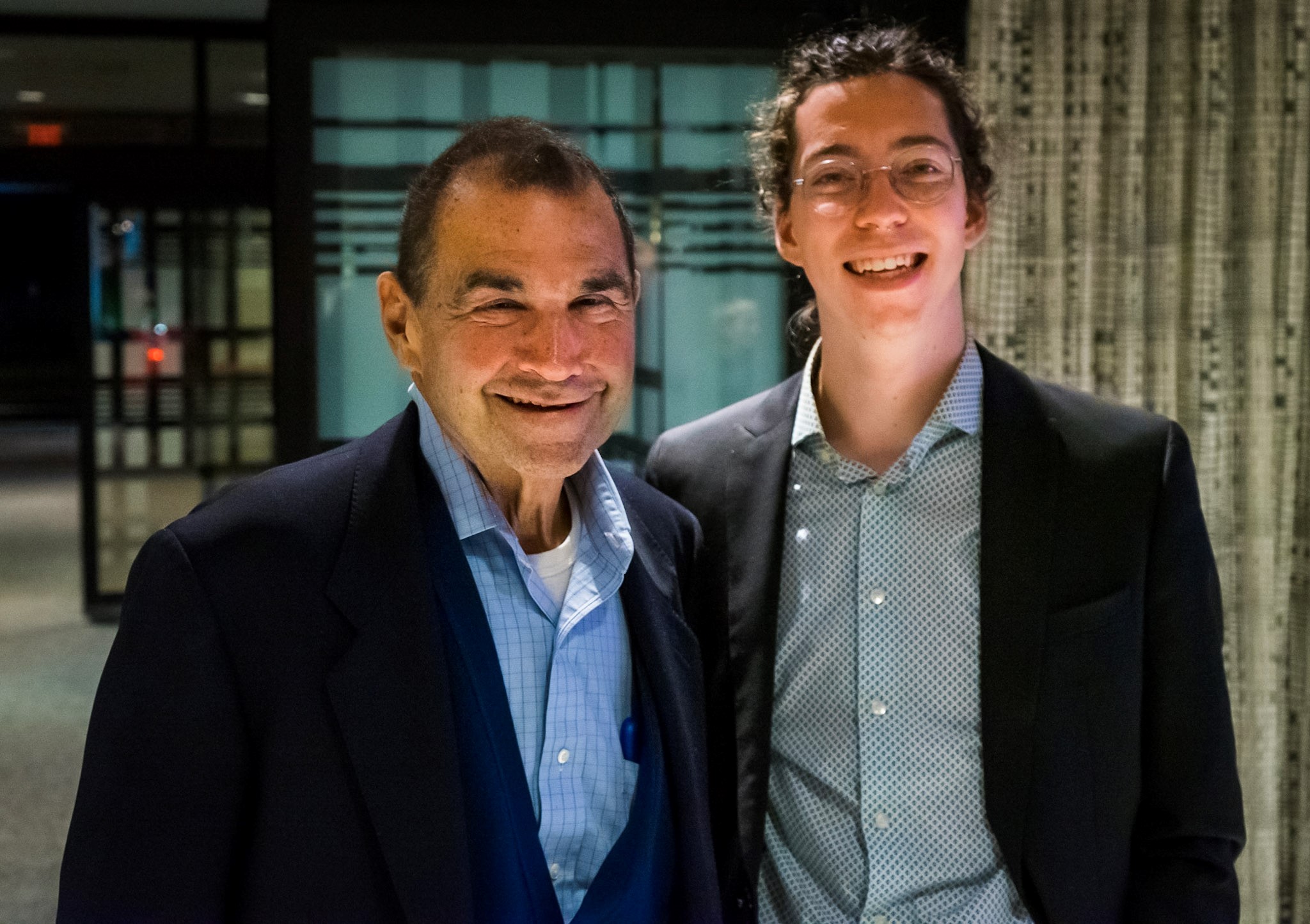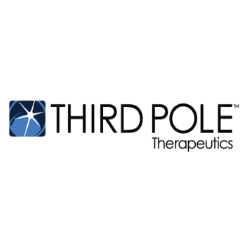 When Ezekiel Hall was born, his oxygen levels were so low that his skin was blue. The blood vessels in his lungs hadn’t expanded after birth. Doctors hooked Zeke up to a ventilator, which pumped low levels of a gas called nitric oxide into his lungs, helping expand his blood vessels. Miraculously, Zeke’s color and oxygen levels returned to normal and in a matter of days, he was a healthy baby boy. That was 1990 when treating so-called “blue babies” with nitric oxide was in its infancy. Now, giving nitric oxide gas to newborns with respiratory failure is the standard of care. But not every infant in need of this treatment gets it. It’s expensive and available only at larger medical facilities in developed countries where patients need to be referred and often times flown to.
When Ezekiel Hall was born, his oxygen levels were so low that his skin was blue. The blood vessels in his lungs hadn’t expanded after birth. Doctors hooked Zeke up to a ventilator, which pumped low levels of a gas called nitric oxide into his lungs, helping expand his blood vessels. Miraculously, Zeke’s color and oxygen levels returned to normal and in a matter of days, he was a healthy baby boy. That was 1990 when treating so-called “blue babies” with nitric oxide was in its infancy. Now, giving nitric oxide gas to newborns with respiratory failure is the standard of care. But not every infant in need of this treatment gets it. It’s expensive and available only at larger medical facilities in developed countries where patients need to be referred and often times flown to.
The Waltham, MA-based company Third Pole, co-founded in 2014 by Dr. Warren Zapol and David Zapol, based on Dr. Zapol’s pioneering research in inhaled Nitric Oxide (iNO) therapy – is trying to change that. Third Pole’s device makes NO on the spot, instead of storing pre-made gas, which eliminates production, distribution, and storage costs. The technology is based on a simple concept—a small spark of electricity rearranges nitrogen and oxygen from the air to make NO gas, explains Philip Silkoff, Third Pole’s Chief Medical Officer. Because the device only needs air and electricity to work, hospitals and birthing centers could store the lunchbox-sized device until it’s needed, instead of rushing infants to centers that store NO tanks.
Dr. Zapol’s research was supported by years of R01 grant from National Heart, Lung, and Blood Institute. In 2015, Dr. Zapol received Proof-of-Concept funding grant from the NIH-funded Boston Biomedical Innovation Center (B-BIC) to develop a prototype device. In addition to funding, B-BIC provided Dr. Zapol and Third Pole with access to commercialization resources and expertise and supported them in their first round of Series A funding negotiations. Further development of a prototype was aided by Direct to Phase II Small Business Innovation Research (SBIR) funding from the National Heart, Lung, and Blood Institute acquired (NHLBI) in 2016.
Treating respiratory failure in babies isn’t Third Pole’s only goal. Many adults with chronic lung disorders could find relief from inhaled NO treatment. That’s why the company is also working on a portable device for in-home use. The company plans to bring the hospital version of the device to market once they receive FDA-approval, which they anticipate filing within the next 12 months. The home ambulatory device could be available as early as the end of 2021 for first in human use. Eventually, Silkoff says the hope is to distribute the device to developing countries, where NO treatment isn’t currently accessible but could reduce mortality in children by up to 20%.
 When the coronavirus pandemic began, Third Pole CEO Bill Athenson says the company also wanted to make sure their devices could accommodate treating people with future respiratory illnesses, since NO treatment has been shown to improve outcomes in both Covid-19 and SARS patients. “It was important to make sure that our system could reach the nitric oxide levels that researchers were understanding to be therapeutic.” Because Third Pole’s platform was designed to be flexible, the modifications were relatively minor. “I think all of us were deeply committed to improving what looked to be a very dire situation and we did not want to stand on the sidelines and not participate,” says Athenson.
When the coronavirus pandemic began, Third Pole CEO Bill Athenson says the company also wanted to make sure their devices could accommodate treating people with future respiratory illnesses, since NO treatment has been shown to improve outcomes in both Covid-19 and SARS patients. “It was important to make sure that our system could reach the nitric oxide levels that researchers were understanding to be therapeutic.” Because Third Pole’s platform was designed to be flexible, the modifications were relatively minor. “I think all of us were deeply committed to improving what looked to be a very dire situation and we did not want to stand on the sidelines and not participate,” says Athenson.
It’s been almost 25 years since Ezekiel Hall was lucky enough to receive the NO treatment that saved his life. Cases like Zeke’s is not uncommon; two percent of all newborns are affected by respiratory failure, which is responsible for one-third of total newborn deaths. Someday, when the Third Pole device is widely available, babies facing respiratory failure won’t need to rely on luck.







